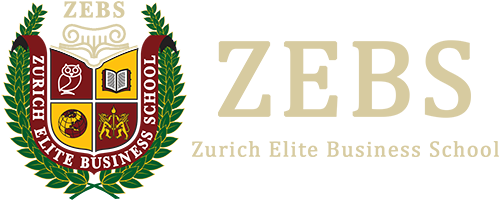
Lean Production
Learn how to apply key elements of Lean Production, from minimizing inventory and reducing setup times, to using 5S and Kaizen, in order to improve quality and productivity in your workplace.
About this course
- The current course run ends on June 30, 2021. If you think you won’t have enough time to finish, you can enroll in the run starting on May 01, 2021 and ending on June 30, 2022 *
Learn about Lean Management, a customer-centric methodology that improves processes by eliminating waste and focusing on value-added tasks.
This course will introduce the main tenets of the Toyota Production System, which includes Just-in-Time manufacturing, quality management tools, and the critical concept of Kaizen, the Japanese practice of continuous improvement. You will also learn about the key organization and managerial approaches that are used in Lean.
You will learn how to analyze process flows in order to establish process capacity and identify the process bottleneck. You will then calculate resource utilization and cycle time to evaluate the impact of set up times, batching, defects and reworks on key process performance measures, including inventory, flow rate and flow time.
We will also discuss the impact of key concepts of Lean, including Heijunka, Kanban, Jidoka, Andon, Poka Yoke, and 5S, which help achieve increased productivity and quality.
Upon successful completion of this program, learners will earn the TUM Lean and Six Sigma Yellow Belt certification, confirming mastery of Lean Six Sigma fundamentals to a Green Belt level. The material is based on the American Society for Quality (www.asq.org) Body of Knowledge up to a Green Belt Level. The Professional Certificate is designed as preparation for a Lean Six Sigma Green Belt exam.
At a glance
- Institution: TUMx
- Subject: Business & Management
- Prerequisites:
This course reviews basic calculations used in production management. Therefore, basic math skills are necessary.
- Language: English
- Video Transcript: English
What you’ll learn
- The history and background of Lean production and the complementing elements of quantity and quality control.
- To measure production performance and how defects and waste degrade performance.
- To understand the importance and role in Lean Production of the customer “Takt.”
- To improve process performance through the application of Lean principles, including setup time reduction, batch optimization, and defect elimination.
- To explain the importance of Total Productive Maintenance and the widely-used metric Overall Equipment Effectiveness.
- To understand the difference between push- and pull-systems and how the implementation of pull-systems reduces waste.
- To apply elements of Lean production including Heijunka, Kanban, Jidoka, and Poka Yoke.
- To apply the 5S methodology for establishing and sustaining a productive work environment.
Syllabus
Week 1: Introduction: Identification of Waste
Understand the basic differences between craft production and mass production. Review the history of Lean Production, focusing on Japan’s Toyota Production System as an alternative to mass production. Discuss how waste impacts productivity and describe Taiichi Ohno’s famous 7 Wastes.
Week 2: Understanding Flow: Capacity Analysis
Cover the basics of process analysis, including understanding how to calculate process capacity and resource utilization, as well as the important concepts of cycle time and takt time. Understand the relationship between inventory, a waste, is directly related to the flow time in a system through Little’s Law. Understand how variability in a system causes queuing or waiting. even if there is enough capacity on average.
Week 3: Continuous Flow: Setup Time Reduction
Calculate the impact of setups on capacity when the product variety is increased and understand how batching can improve this, but at the expense of increased inventory. Review the Single Minute Exchange of Die (SMED), and learn why reducing setups and changeovers are critical to Lean manufacturing. Discuss the concept of Total Productive Maintenance and calculate the metric Overall Equipment Efficiency.
Week 4: Improving Flow: Workplace Organisation and Visualization
Introduction to the concepts of Workplace Visualization and Organization and 5S for improving and maintaining continuous flow in Lean Production.
Week 5: Maintaining Flow: Establishing Pull Systems and Scheduling
Define the key principle from the Toyota Production System, Just-In-Time (JIT)and the significance that JIT has for Lean Production in reducing waste and meeting customer demand. Review the relevant components of production planning and how these affect Production Scheduling, the heart of Lean Production. Understand, with the help of reduced setup time, how Mixed-Model Scheduling achieves a match between production and customer and how Pull systems can be realized using Kanbans.
Week 6: Quality and Continuous Improvement
Calculate the impact defects have on our flow rate. Understand how Poka Yokecan help fool-proof our processes and learn how to structure and run a Kaizen Blitzto bring about rapid improvement opportunities for problem-solving and process improvements. Consider the central role of Continuous Improvement in Lean Production by comparing the set of management principles, The Toyota Way 2001, and Jeffrey Liker’s 14 Management Principles.
Learner testimonials
“One of the best MOOC on Lean production that you can find online. Whether you are a novice or an expert, this course gives you the concise content that is required to understand lean. The course is well structured, perfectly presented with case studies, examples, math problems, discussion forum, guest lectures given by prominent faculty members from reputed universities around the world. The best things about the course are the faculty members & the participants, who bring in rich diverse experience either educationally or professionally or both. I would recommend this course as well as other courses that are part of TUM’s Professional Certificate Program to those who want to learn or brush up their skills in six sigma and lean. Thank You Mr.Martin, Mrs. Holly, Mr. Reiner, Mr.Zubair and the entire support team. Take a bow!” — Murali Dhepalli
“At the beginning I took this course just to show current or future employers my experience in this topic and didn’t expect anything so new for me as it’s my filed of work as a manager in continuous improvement. But as the course commenced, I have learnt more and more details that I could already implement in day to day work. I really enjoyed this course and it’s sure that i will enroll in the additional ones in this TUMx professional program. Prof. Holly Ott and her team managed to develop a great MOOC that is fun and horizon expanding. Prof. Ott is a frequent follower (and responder) of forum discussions which encourages everyone to exchange experiences. Not to forget the emails you get during the course with great pointers to real world problems. All in all, I can recommend this MOOC a lot to anyone who is even remote interested in lean and production management.” — Christian Kahl
“This course is the last one in Six Sigma – Lean production offered by TUM on EdX. First thing : while it’s been said that this course can be taken as stand alone, I really think it is best to take first the 2 other courses on Six Sigma, at least if you are a novice in quality management. The course itself is really great. It covers a lot of subject and it is a good help for any manager having to deal with productivity issues, not only in manufacturing but also in service industry. The instructors are very good, they know their subject and can easily pass their knowledge to the student through the lectures. One of the best thing for me was to see the theory applied to real life examples (you’ll see that Professor Holly is really into skateboarding!). Bottom line, I recommend this course!” — Etienne Pavajot
“Dear TUM, I am grateful to be one of you MOOC’S student. Really, it helps me a lot specially when I took my ASQ CSSYB and CQIA. It’s almost a year now since I started this professional certificate program and I am happy to inform you that I completed all of 3 verified certificates. Although, I am working as Nurse but I know that some of those concept’s are applicable or can be applied in healthcare setting. Thank Professor Holy and Other’s TUM faculty for your great effort that boosted my passion in Quality field. Regards, Manuel” — Manuel
About the instructors

Martin Grunow
Professor of Production and Supply Chain Management at Technical University of Munich

Holly Ott
Senior Lecturer in Operations Managementat Technical University of Munich and Professor Production Management at Rosenheim University at Technical University of Munich


